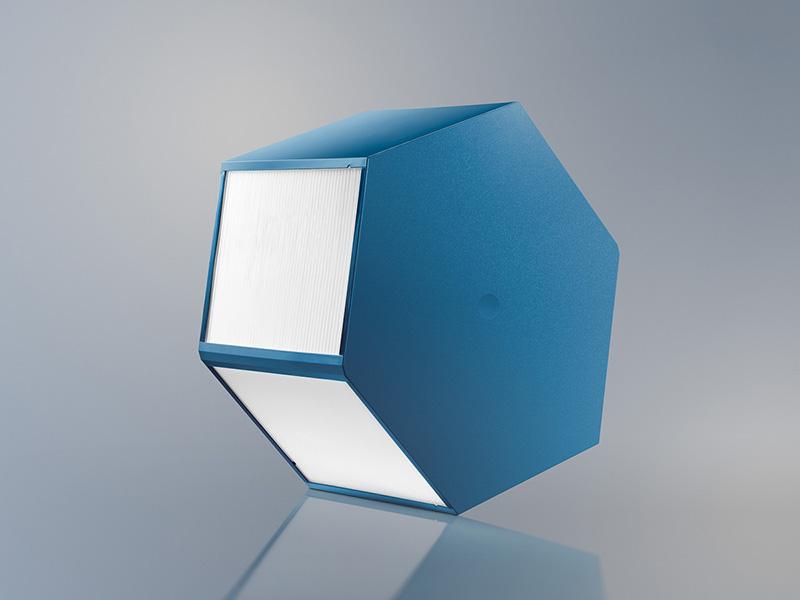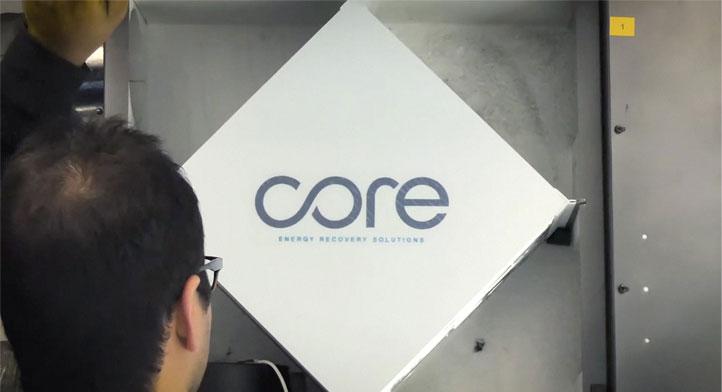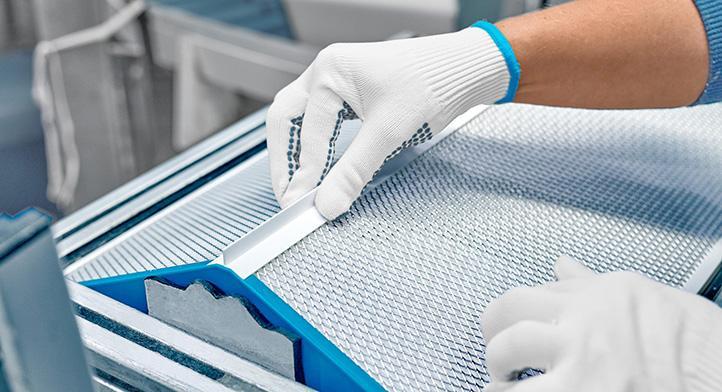how does heat recovery work?
Why a ventilation system with heat recovery makes sense
Whether it’s ventilation for residential or commercial properties: When considering ventilation systems today, there is no getting around the subject of heat recovery. The technology is sustainable and, ultimately, saves money. Here you will learn what heat recovery is and why it makes sense to choose heat exchangers from CORE for ventilation systems with heat recovery.
What is heat recovery?

To begin with, in purely physical terms, heat recovery is simply the transfer of energy from one medium to another. Sounds complicated? It’s easier to understand with indoor ventilation: Here, the cold outside air is heated by the ambient air before it flows into the room. That saves heating costs and reduces environmental impacts because no additional resources are used to heat the air.
How is heat recovery achieved?

Heat recovery takes place in ventilation systems. In components such as heat exchangers. The process of heat recovery is actually simple: To begin with, the warm outgoing air simply transfers its heat to the fresh incoming air. At the same time, a continuous air flow is generated in the ventilation system. The process now becomes considerably more complex: In order to achieve ideal results, the volume of fresh and exhaust air passing through the ventilation system must be precisely matched to the capacity of the heat exchanger in the ventilation system.
What are the different types of heat recovery?
Heat recovery takes place in a number of ways. The main types of heat recovery in ventilation systems are recuperative and regenerative heat recovery:
Recuperative heat recovery
In recuperative heat recovery, exhaust air and supply air flow past each other in plate heat exchangers through separate channels. The air flows can be directed across (crossflow) or opposite (counterflow) one another. The benefit of using heat exchangers lies in the highly efficient and, most importantly, hygienic heating of the air.
Regenerative heat recovery
In regenerative heat recovery, the heat from the exhaust air is indirectly transferred to the supply air. Here, the two air flows are directed past a heat-storing medium at different intervals. The heat from the exhaust air is first stored and then released again. One example of this technology is best seen in thermal wheels. The advantage of this method is that the air is not only heated, but also humidified. However, the air flows in thermal wheels are combined, meaning that this method is not quite as hygienic as recuperative heat recovery using plate heat exchangers.
Is it required to have a ventilation system with heat recovery in place?

A healthy indoor environment and a comfortable room temperature require energy. Approximately 70 percent of the energy consumed by private households in Germany is used for heating. And that number is growing (source: Destatis). To address this, the Energy Saving Ordinance (EnEV) in Germany aims to significantly reduce overall energy consumption by 2050. One key to this: Stricter requirements for thermal insulation and systems engineering in old and new buildings. In new buildings, for example, the EnEV stipulates that the building must be made airtight. Unlike in older buildings, where outside air can enter through window gaps, for example, in new buildings the air is only exchanged when windows are open. Good for the fight against climate change – but a challenge for a healthy indoor environment. Ventilation systems with heat recovery are therefore a basic component of modern, energy-efficient buildings. However, the specific requirements for ventilation systems are governed by other laws and regulations, such as the Ecodesign Directive.
Why your ventilation system should be equipped with a CORE heat exchanger
The efficiency of heat recovery in your ventilation system largely depends on the choice of heat exchanger. Our heat exchangers impress not only with the highest quality of workmanship, but also with performance that is unique among heat exchangers. Washable, antimicrobial, low-maintenance and with the highest transfer values, heat and enthalpy exchangers from CORE ensure ideal operation of the heat recovery process in your ventilation system and a consistently healthy, pleasant indoor environment.
Additional topics

Counterflow heat exchanger vs. crossflow heat exchanger
What are the different types of heat exchangers? How do they work? And when is each technology suitable? We’ll explain all about the different types of heat exchangers.

What is a heat exchanger?
What exactly is a heat exchanger and how do these fascinating products improve energy efficiency? Here you can learn how heat exchangers work and what matters when choosing the right heat exchanger.

Products and solutions
Wide variety of products, patented technology: With our wide-ranging portfolio of crossflow and counterflow heat exchangers, you will always find the right product for your application. And if needed, we can individually manufacture the right heat exchanger for your specific ventilation system.